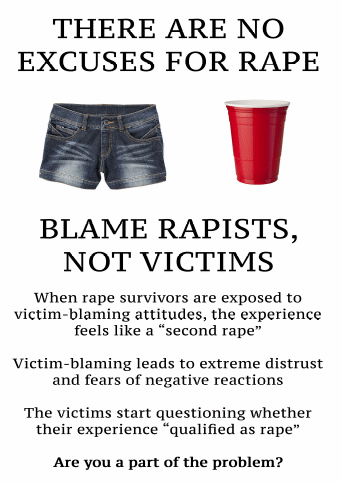The phenomenon of victim-blaming sparked controversy in recent years, with some of the major news outlets found guilty of sympathizing with criminals and accusing the victims of being responsible for the crime committed. Victim-blaming can have life-long consequences on the lives of crime victims, highlighting the need to stop the media’s scrutiny of the victims and focus on those really responsible for the crime instead.
Victim-blaming occurs when criminals are given a higher social status opposite the victim, with the victim held responsible for the crime committed (Schoellkopf, 2012, p. 2). Victim-blaming is practiced by criminals, legal and health care professionals, and sometimes even by the victims themselves, and most recently, by the individuals on social networks. The most dangerous form of victim-blaming, however, occurs when the journalists who cover a particular news story side with the criminals and hold the victim accountable for the crime instead. Victim-blaming is perpetuated by sexism and racism and is most commonly associated with hate crimes and rape. This phenomenon is explained in part by the subconscious fear of being a victim of such crimes, as well as some individuals’ firm believes in a just world, and the need of justifying existing social systems (Savani, et al., 2011, 798). One example of victim-blaming that received a particularly strong response from the Internet was the coverage of a rape case in Steubenville, Ohio, by CNN. The victim, a sixteen-year-old girl, was raped unconscious by Trent Mays, 17, and Ma’lik Richmond, 16, who were given a maximum sentence for their crime.
CNN’s reporter Candy Crowley, who covered the story, described the rapists as the men who had “promising futures, star football players, very good students”, and noted that it was difficult to watch their lives destroyed (Edwards, 2013, para. 4). CNN showed the footage of one of the rapists “crying and hugging his lawyer”, but paid little to no attention to the consequences rape has on the life of the victim (Edwards, 2013, para. 6). It is a textbook example of the sexism-based allegation against female victims that occurs due to sexist expectations, meaning that the victim “asked for it” by putting certain clothes on, or by behaving in a certain way. The victims of rape have to go a long way in order to recover from this traumatic event. The victims suffer from anxiety, diminished alertness, and confusion that lead to insomnia, persistent fear or depression. They need the support of their family, friends, and society in general in order to process the trauma, and victim-blaming is a major roadblock on their way to recovery. Studies show that the recovery is less likely if the victim is faced with prejudicial attitudes toward them (Moor, 2007, p. 19). The media is responsible for objective coverage of any events, and it is especially important for journalists to avoid victim-blaming when reporting on crimes as it can make the life of the victim more difficult and can have life-long consequences.
Victim-blaming hides the real reasons people commit crimes, thus elevating the status of the perpetrators of crime and promoting the crime itself. This tendency should be stopped, and in my flyer, I persuade the audience to avoid victim-blaming. I put one of the arguments people typically use to justify rapists front and center and debunk it right away. Some factual data is provided to raise awareness about the consequences victim-blame can have on the victims.
References
Edwards, D. (2013). CNN grieves that guilty verdict ruined ‘promising’ lives of Steubenville rapists. Web.
Moor, A. (2007). When Recounting the Traumatic Memories is Not Enough. Women & Therapy, 30(1), 19-33. Web.
Savani, K., Stephens, N., & Markus, H. (2011). The Unanticipated Interpersonal and Societal Consequences of Choice: Victim Blaming and Reduced Support for the Public Good. Psychological Science, 22(6), 795-802. Web.
Schoellkopf, J. (2012). Victim-Blaming: A New Term for an Old Trend. Web.
